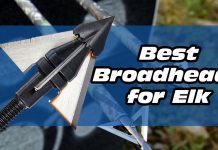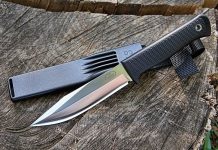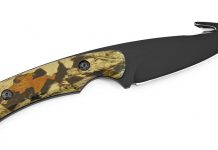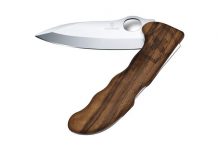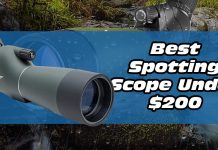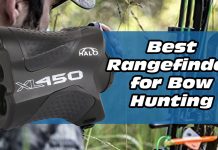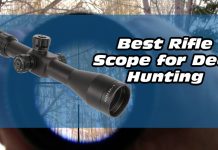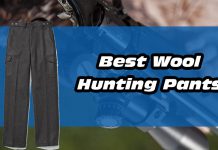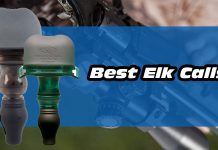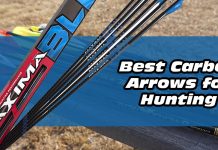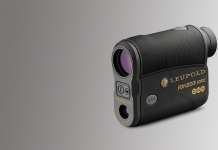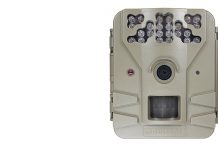What is the Top Elk Hunting Broadhead?
Just to ensure that we start off on the same page, elk belongs to the deer family with the main difference being their size. They are relatively bigger than their counterparts, weighing between 325 and 1100 pounds.
They are about 4 to 5 feet tall without considering the antlers. Do you see any relation?
Here is a fact. Elk can be a tad hard to kill as compared to the general deer family. As such, you are a bit lucky if you go hunting with a rifle. If you are used to a bow, you need to be more cautious.
One of the things that you should consider is ensuring that you have the right type of broadhead as part of your hunting arsenal. At the end of the day, the broadhead will determine how easy it is to shoot right through the elk’s body.
You should select one that has a large cutting diameter and a pointed end, to increase the chances of penetration. On the bright side, various models are available in the market.
We have conducted our research and identified some of the best picks that you might want to settle for.
① Stinger Buzzcut
 Buzzcut has blades that are razor-sharp to make sure that they cut deep whenever they come into contact with the thick elk skin. This minimizes the chances of bad shots, as they can cut right through the bones of the animal.
Buzzcut has blades that are razor-sharp to make sure that they cut deep whenever they come into contact with the thick elk skin. This minimizes the chances of bad shots, as they can cut right through the bones of the animal.
On top of that, the blades are 4 in total, increasing the cutting diameter. They will cut a huge chunk of the elk’s flesh, leaving a huge blood trail if the animal tries to get away.
Buzzcut’s blades are made from a quality steel material and the margins are serrated to ensure that they last for a long period. Quality should be a priority if you do not want to spend yet another fraction of money on replacement.
In case you love shooting lightweight broadheads, this is your go-to option. The model comes in various weight options, which are 85, 100, 125, and 150 grains. Plus, the blades’ flight pattern is consistent. This improves your hunting accuracy
On the downside, however, you might need to regularly sharpen the blades which makes maintenance a bit hard.
Pros
- Has razor-sharp blades
- Has a wide cutting diameter
- Weighs 85 grains
Cons
- Requires regular sharpening
- You need to tune it for accuracy

② QAD Exodus
In the runner’s up is this full blade Exodus model. For someone who can get around the hefty price tag, this should be the way to go. It is a combination of quality and performance.
First things first. The blade has a sharp and pointed end to make sure that it easily penetrates the thick skin. It is an excellent buy for beginner hunters as it can be easily tuned and it requires no special knowledge.
QAD Exodus has a cutting diameter of 1.25 inches. This is wide enough to make a big hole, which is all a hunter needs. That coupled with the fact that it has a high speed makes it a great option.
The broadhead can travel up to 72 yards after being released, meaning it can be used for both long-range and short-range shooting.
As expected, the full blade is strong enough (since it’s made from quality stainless steel) to withstand the force resulting from impact. In case of any eventuality, it is replaceable and you just have to get a new one and fix it.
Pros
- It is durable
- Has a strong and sharp full blade
- The blade is replaceable
Cons
- It is a bit expensive
- Only has one full blade

③ Muzzy Trocar
To ensure that the flight pattern of your broadhead is consistent and predictable, go for this Muzzy Trocar product. The broadheads move in a straight pattern, minimizing the chances of missing your target.
As a result, they can cut through the flesh and bones leaving a big hole and great blood trail. The latter helps when it comes to recovering shot elk (in any case, they will not be able to go past 70 yards from the shooting point).
This is made even more possible by the sharp, 1.1875 inches blades.
To add to this, the broadheads have been crafted in a unique design which is instrumental in determining their accuracy. On the contrary, however, the design makes it somehow difficult to replace the blades whenever they bend.
Also, the design makes these types of broadheads suitable for expert hunters who already know their way around hunting and shooting. You might therefore want to keep searching if you are a beginner.
Pros
- Has a consistent flight pattern
- The blades can be detached
- Guarantees accurate shots
Cons
- They are not the perfect option for beginners
- You have to tune them for accuracy

④ Slick Trick
These broadheads are made from strong and quality steel material for increased longevity and durability. This is a necessary pre-condition that must exist in any broadhead since you are making a long-term investment.
The blades have a cutting diameter of 1 1/16 inches and are sharp. Needless to say, these features ensure that the blades cut through the skin the moment they come in contact with the animal.
The blades weigh 100 grains and are a good option for hunters who cannot handle the 125 grains models. Although they are a bit light, they are still a good option to kill elk and other big game.
The manufacturers utilized an Alcatraz technology, which is a system used to lock the blades when they are in motion. They are only released upon impact.
On the downside, the blades produce a considerable amount of noise when they are in the air. If your target animal has sharp hearing, they may manage to get away before you get to them.
Pros
- Features an Alcatraz blade lock mechanism
- Made from quality steel material
- The blades are sharp
Cons
- The blades are noisy
- Requires regular maintenance

⑤ Rage Bowhunting CrossbowX
Just because this broadhead comes in the fifth position, it does not mean that they are any less effective than the others. Here’s an icebreaker. Rage Company is among the most reputable and renowned companies in the United States.
Having been in the business for years, you can be sure that CrossbowX is a quality and high performance broadhead.
The broadhead has an aerodynamic design that helps it to move smoothly through the air. Well, this involves a little bit of science as the streamlined shape reduces resistance to movement caused by air currents.
Thus, they fly at a high speed and land with great impact force which caused deep penetration through the skin. The blades are razor-sharp so they can crush bones as well.
The blades are also made from aluminum for durability and resistance to rust. They, therefore, last for long periods. The shock collar technology that has been included enhances the durability by absorbing the excessive forces that can disfigure the blades.
Since Rage CrossbowX is light, it is easy to move around with the broadhead.
Pros
- Features a shock collar technology
- They are lightweight
- Has an aerodynamic design
Cons
- Can cause injuries if mishandled
- The colors used are unattractive

Choosing a Broadhead for Elk Hunting
Right off the bat, you cannot go elk hunting with any type of broadhead. That does not mean that there are specific broadheads that can kill elk, no. They all perform the same role which is slaying game.
But your chances of success entirely depend on the type of broadhead you go into the woods with. Stating the obvious, elk are bigger than other animals. That means that a broadhead that can penetrate a turkey’s skin might not cut an elk’s skin.
So you have to look at particular features to ascertain that you have the right tools.
These include aspects like the type of the broadhead, the cutting diameter, their weight, the price, customer reviews, and blade count.
Type of the broadhead
Unless you are a beginner in this hunting sport, then you probably know that several types of broadheads are available in our stores and shops. But this part is meant for expert hunters as well, so keep reading.
Generally, there are 3 main types. That accounts for fixed-blade broadheads, mechanical broadheads, and guillotine broadheads. Now, each of these types has some pros and cons. A given type may be better suited to elk hunting than the other.
Below, we delve into the individual characteristics of each of these types.
Fixed-Blade broadheads
As you could expect, fixed-blade broadheads have been in existence for decades now. They were the only types of broadheads that were available until the 1980s when technology took a turn.
As the name suggests, the blade or blades are often fixed to the ferrule (they do not move).
You will always encounter broadheads that have one, two, three, or more fixed blades. If you are an enthusiast, then you should probably consider getting yourself the 3-blade one.
The more the blades, the bigger the cut they will make when they come into contact with the elk, the higher the chances of dying.
Fixed-blades tend to have a more consistent and predictable pattern since they remain intact in the ferrule when in motion. Thus, they land with great force which increases their level of penetration.
The chances of the target surviving such an impact are minute!
If you are a lightweight shooter, or if your upper body is not strong enough to handle heavy draw weights, this is the ideal broadhead for you.
In strong winds, however, the flight pattern might become problematic. The blades propel the broadhead in a given direction, reducing the accuracy level. Manufacturers have taken note of this issue and they have attempted to respond.
Most of the fixed-blade broadheads now feature reduced cutting diameter. This solves the problem but reduces the chances of causing massive damage to the vitals of the animal.
That said, it might be a good option for hunters who are freshmen or women in the field.
Mechanical broadheads
If you hear anything like mechanical broadheads or expandable broadheads, you worry yourself. They mean the same thing. Why are they called expandable? The name just explains how the blades operate.
These are the types of broadheads that were manufactured in response to the inefficiencies attributed to fixed-blade broadheads (animals shot using the fixed-blade type still managed to get away with low chances of retrieval or recovery).
Unlike fixed-blades, mechanical blades are not permanently fixed to the ferrule. There is a mechanism that keeps the blades locked into the ferrule while they are in motion – this ensures that you still have control over the accuracy of the shot.
The blades can only expand the moment they come into contact with the animal’s skin.
After expanding, they hit a big surface area causing much damage to the animal’s vitals. In effect, it loses a lot of blood and reduces the chances of survival. Plus, the massive blood loss also makes it easier to recover the animal if it runs away.
As though that is not enough, mechanical blades have been specially designed in such a way that they can hold onto the animal’s body. They wouldn’t fall off even if the target tried to shake them off.
Good news to the hunter! The more the animal attempts to walk to run away, the more damage it causes to its internal organs.
Mechanical broadheads are a good option if you own a super-fast bow. It is also the best choice for hunters who shoot heavy arrows.
There is one only one disadvantage that has been reported about expandable broadheads. Upon expanding, the blades lose a lot of kinetic energy and speed. They are therefore not able to punch deep into the animal’s skin the way a fixed-blade can.
Mechanicals can slay elk perfectly.
Guillotine broadheads
If you are specific to elk hunting, you have no business buying a guillotine blade broadhead. You might understand why if you have an image of what they look like.
Ideally, the broadhead has huge blades that are sticking out from the ferrule. They are specifically meant to cut off the head or neck of the target animal. You can infer from this that guillotines are better used for hunting small game like turkeys.
For elk, you want to go for blades that can destroy the vitals, not the neck.
The cutting diameter
The importance of a bigger cutting diameter in a broadhead cannot be overstated. At the end of the day, you are not looking for a broadhead that can punch through one side of the target animal and exit through the other, leaving a wound.
You want to settle for one that can cut a big hole as it punches into the animal’s skin. This way, the animal will lose a considerable amount of blood such that it wouldn’t survive even if it escaped.
The recovery process becomes much easier as you just have to follow the blood trail and voila, you have your meat.
Blade count
Closely linked to the last factor on cutting diameter is the number of blades that the broadhead has. The relationship is a direct one, the more the number of blades, the greater the cutting diameter.
You are going to come across those with single blades, especially if you want to buy a fixed-blade broadhead. Don’t go with the impression that they will not perform their job.
In that case, you just have to pay attention to the design that has been used in their construction. Single blades with a crosscut design will work perfectly.
Whenever you are not working within a budget, just go for broadheads with 3 or 2 blades. The former will be more expensive than the latter, but they are worth the cause. Success is everything that a hunter wants.
Weight
Broadheads come in different weights to suit all kinds of people. As a case in point, broadheads shot by men may not be the same ones shot by youths, or let’s say, women. The difference is the body strength.
The stronger the upper body, the easier it is to handle heavy broadheads.
Broadheads can either be 85, 100, 125, or 150 grains. However, the 100 and 125 grains are the most common types that you are likely to find on the archery stores. Let’s clear the air at this point.
All these broadheads have the same penetration ability. You may want to dispel the notion that some penetrate the skin better than others. Their projectile motions are also somehow alike.
However, there are notable differences some of which we have just mentioned. The first has to do with weight. The 85 and 100 grains broadheads are lighter than the 125 or 150 grains models.
Likewise, the 85 and 100 grains models will naturally tend to be cheaper than the 125 and 150 grains models. The same pattern applies when it comes to the ease of using the broadheads (the lighter it is, the easier it is to use).
For elk wanting, you want to stick to the 125 or 150 grains broadheads. These types are stronger and more likely to slay a big animal than their counterparts. They are versatile as you can still use them to shoot down smaller animals.
The converse might not be true.
Material
The type of material used to construct the broadhead’s blades directly affects the durability and longevity of the product. The stronger the material, the better.
With that said, you want to go for quality materials such as stainless steel. This type of metal is strong enough and can withstand the high force with which the broadheads land after being released.
That also means that the blades will not bend or sustain any type of distortion, saving you the amount of money that you are likely to spend on maintenance if you go for poor quality.
On the same point, the material should be resistant to rust.
Maintenance
You might also want to consider the amount of maintenance the broadhead requires to remain in good shape and perform at the optimum.
For some designs, you might need to regularly sharpen the blades. If you cannot keep up with that, then they are not your cup of tea. Move on and find something else.
Do not settle for a broadhead that requires you to change the blades time and again because the current ones cannot stand the test of time. Again, that goes back to the quality of the material.
Customer reviews
Always check what previous buyers are saying about the broadhead type that you want to purchase. This will especially come in handy if you are doing online shopping, as you cannot inspect the product to determine the quality.
Avoid the product if too many buyers are complaining about its efficiency.
Conclusion
As you already know, elk are huge animals that are not going to be an easy kill. You need more than a 100 dollars broadhead to get past their tough skin and into their vitals. As always, quality wins.
Therefore, you should consider factors such as the type of broadhead before going ahead to pay for one. A mechanical broadhead would increase your chances of killing the animal by far since they increase the cutting diameter.
The type of material used in construction and the weight of the broadhead also counts, as does the cutting diameter and speed of the blades.
With all factors constant, Stringer Buzzcut is your knight in shining armors. The broadhead has sharp blades that will immediately slay that elk upon contact.
The higher the blade count, the better. Buzzcut has 4 blades. These increase the cutting diameter leading to massive blood loss, which makes it easier to retrieve the animal if it runs off.
As far as durability is concerned, the blades of this broadhead are made from strong steel material which can withstand the high impact forces that can otherwise lead to deformation.
Consider getting yourself this brand if you ever think of buying one.


